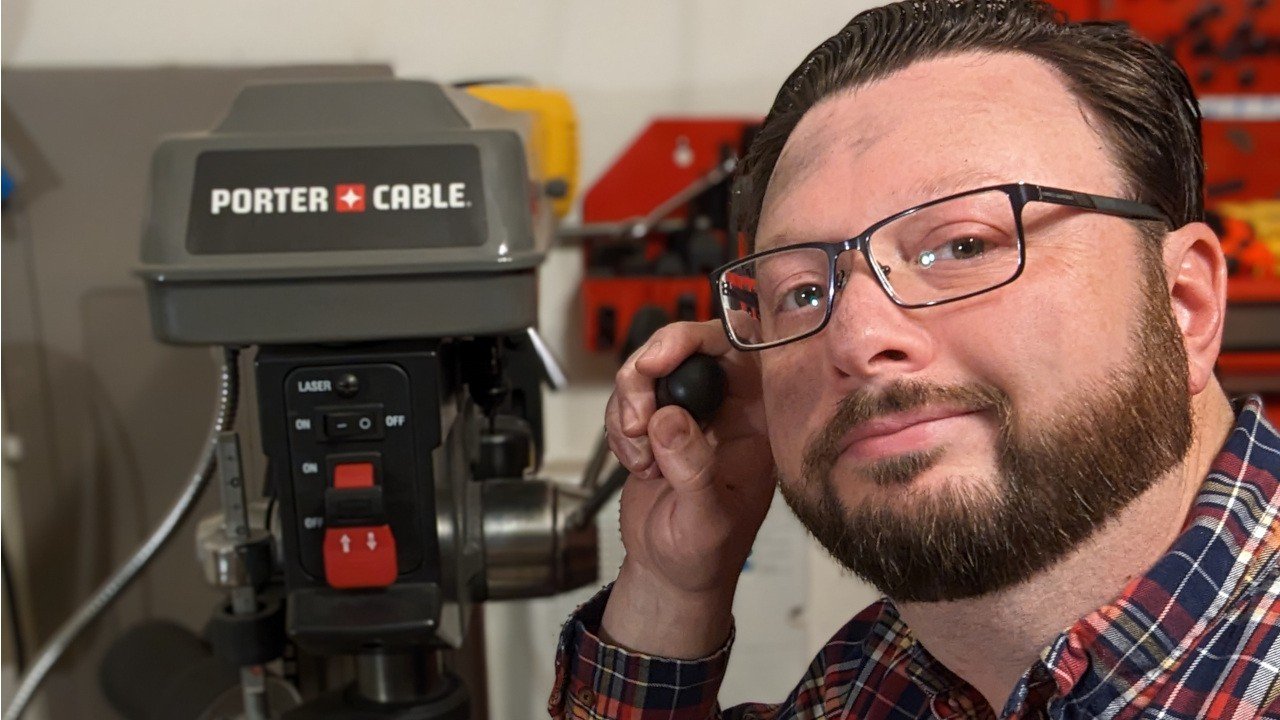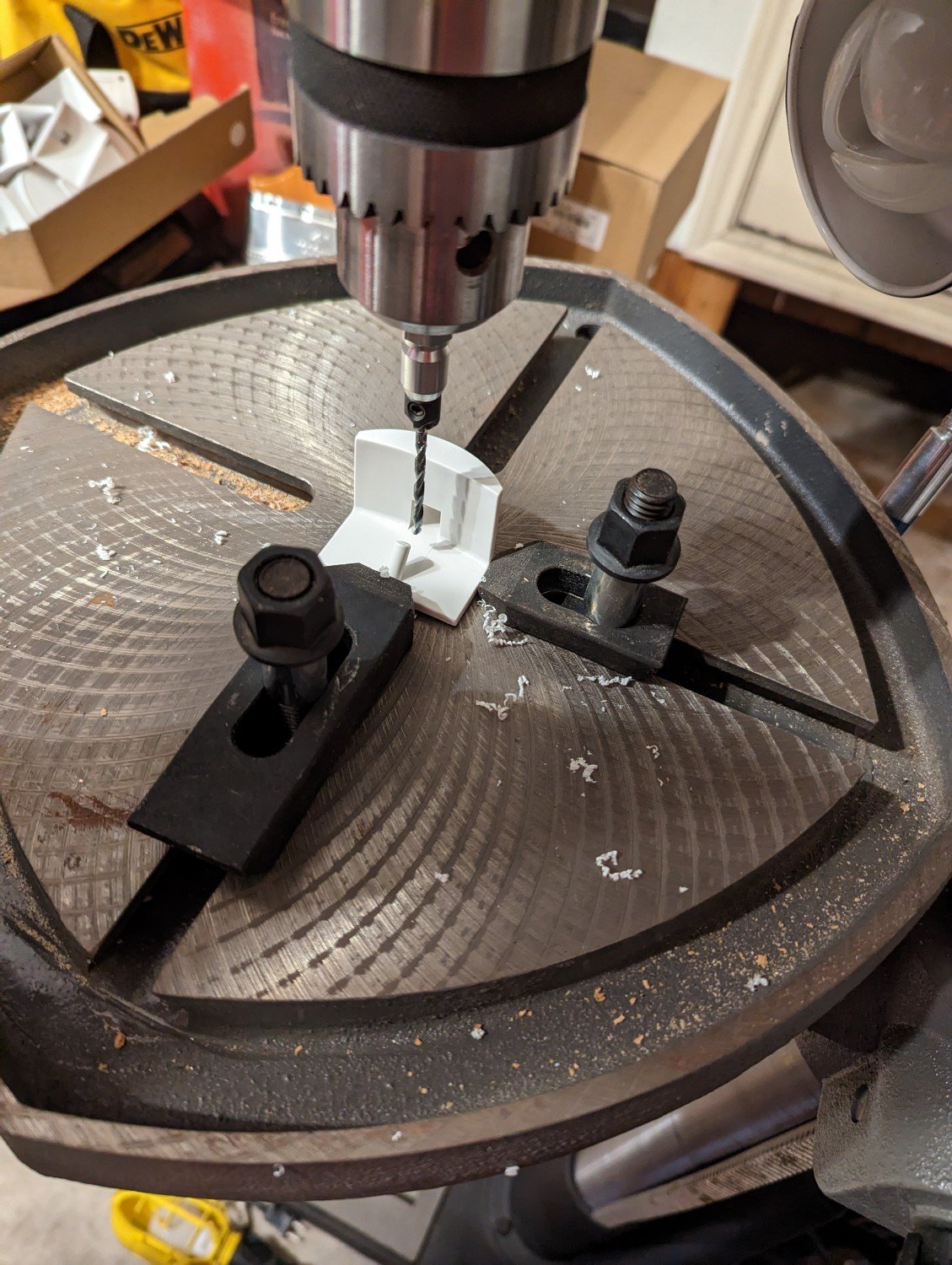Drilling Down on Process
Over the holiday break my wife, I mean, I, decided to do a little organization in my closet. I have several hats that have been sitting on a shelf and I thought that I could save some room by hanging them on the wall. I found a set of 12 hat hangers online and decided to mount these to the wall in my closet and in my wife's closet. Although these rounded plastic hangers had sticky tape already mounted to the back, I decided that I would not rely on that tape and utilize a single screw to hold it to the wall as well
These plastic pieces didn't come with a screw hole, so I would need to drill a hole into each piece. Anybody who knows me well can probably guess that I'm not the type of person that would just grab a hand drill and drill a hole "somewhere in the center". Even though a hat would cover up the entire device and any screw, that's just not the way I work. I would hate for anyone to view my hangers on the wall in 20 years' time and misconstrue me as a person with such disregard for perfection.
Perfectly Centered!
So, I took the pieces out to my garage and set up a jig so that I could consistently drill and countersink a screw hole in the exact same place and at the exact same depth for each one. Previously a machinist in the Navy, I have used this type of clamp set before. This is something more commonly used by machinists and not something you would find in your home improvement box store, but I find this set to be very flexible for almost any use on the drill press. With my previous experience of knowing what works best, it only took about 5-8 minutes to measure the center, place the center under the drill bit, set up a block on two sides of the plastic hangers, then set up the depth stop on the drill press.
Now, if I hadn't have stopped to take pictures and video throughout this process, it would have taken me only a few minutes to drill all 12 of these hangers. Plunge the spinning drill into the plastic until it stops, let the drill come back up, remove the plastic hanger, brush away the drilled out plastic, and then place a new hanger on the drilling platform up against the two metal clamps, repeat. Seriously, it probably would have taken a minute and a half to get all 12 of these pieces drilled.
Drilling made easy
It almost seems counterintuitive to spend so much time to set up the jig. When drilling the pieces takes only a few seconds, why spend almost 50 times as long to set up the jig?
Without the jig, I would have had two options. Drill a hole with a hand drill somewhere in the center -- just eyeball it and call it a day. I'd have a hole that's probably in a pretty good spot. Plenty of people would say that that is just fine. Option 2 would be to use a ruler and measure the center and position for each piece, using a marker to notate where to drill, then using a hand drill to drill the center. Again, a perfectly fine way to do it, but would take even longer to get them all done than when using a jig. Plus, I'd have a larger chance of errors in consistency from either misreading the ruler or forgetting if that was 1' - 5/8ths or 1" - 5/4ths. In either case, if I wanted the screw head to fit down into the plastic, I'd still have to use a counter sink to drill an angled hole. Go too deep, and the piece is ruined. Easy to do with soft plastic and a hand drill.
In this household chore, I found an opportunity to consider how this might illustrate processes in a business. Regardless if your company prioritizes speed, low cost, or excellence, processes are a key element of any successful business. Ensuring your employees are well-equipped with up-to-date and accurate written protocols is the first step towards successful job performance.
There's nothing wrong with being a low-cost provider that would drill the hole somewhere in the middle and, as long as it stayed on the wall, the requirements have been met. If this is the case, employees must be aware of what exactly they need to do in order to fulfill those demands and nothing more. The more time they spend on a job, the less efficient your company is -- and the less profitable.
Conversely, a high quality provider ought to be charging appropriately for both supplies and time spent on completing a job with higher requirements. If your employee is the type who would not see the value in a perfectly centered screw hole, or understand that's what the customer wants, they are likely to cut corners. A quality job doesn't have to take a long time, though. While it does take a bit more time to set up your processes beforehand, your employees can still carry out a quality job in the most efficient way possible, and perform that job consistently.
It's not only important to simply document your policies and procedures, but it's important to make sure that all of your policies and procedures are aligned with your company's strategy. If employees are putting in extra work and your company charges a low price, then your customers may form the impression that they can expect the highest quality service from you at an affordable cost. On the other hand, if your employees are not making an extra effort to go above and beyond for your customers, then your high-profile clients will be less impressed by your company's quality of service. Neither of these outcomes are sustainable and the lack of documented processes are undermining your business strategy.
Machinist's Clamps
One last thing I want to talk about is having the proper tools. As I mentioned, this clamp set isn't even something that you can find at the same store where I bought the drill press. This set is typically meant for a machine mill which is like a drill press on steroids. But, having the experience of using a mill, I knew the value of investing in this set. The bottom side of the drill press platform isn't flat. It's an unfinished cast iron surface that makes using traditional clamps problematic once the vibrations of the drill kick in. No matter how much you tighten it down, it wiggles loose and can make you drill in the wrong place. Investing in the right tools is essential for any business, regardless of whether it's competing on quality or price. Not only will they benefit your employees significantly but also can give you a competitive edge over other companies. To get the most out of your tools, it's not enough to simply be knowledgeable about how to use them. Your personnel must also know when they should be used and have access to relevant training documents whenever required.
UseWhale.io
One of the tools that I use both internally and with my clients is Whale. Whale is a platform that allows you to create custom SOPs and have them in a centralized place with controlled access. You can assign procedures or acknowledgment of policies to employees and get reports on completion. Interactive links, gifs and pictures, and screen recorded videos make using whale more engaging than traditional word documents. Click the link below to learn more.
If you're interested in learning more about how my team can help your company align its processes to your strategy, contact us to schedule a free consultation at [email protected]
Learn more about Whale! https://invite.usewhale.io/52mmi8nzru5t





